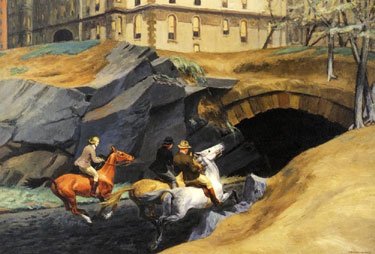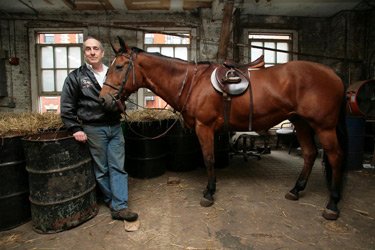Paul Novgorod, Claremont Owner Dies at 73
Claremont Riding Academy, Horseback Riding, Obituaries, Paul Novgorod
The Times reports:
Paul Novograd, whose reluctant decision to shutter his family’s century-old Claremont Riding Academy in 2007 turned Manhattan into a no-horse town, died on Friday. He was 73.
His death, in Manhattan, was confirmed by his daughter Sasha Brown, who said doctors had not yet determined the cause.
Claremont’s sudden closing left New Yorkers without what had been billed as the oldest continuously operating stable in New York City and Manhattan’s oldest riding school and last public livery.
Claremont had been home to countless horses since it opened in 1892 on the Upper West Side, had trained generations of riders in its arena, and had supplied equine cast members to the Metropolitan Opera and other cultural institutions.
Riders boarded their mounts in stalls that rented for hundreds of dollars, or what people in other cities would pay for apartments. Horses could also be rented for upward of $55 an hour, to hoof it one block north and two blocks east from the Claremont stables, at 175 West 89th Street, to Central Park’s four-and-a-quarter-mile bridle path.
Mr. Novograd saw the deterioration of that path — caused by joggers, bicyclists and others who rediscovered the park after it was rehabilitated — as one reason for the decline in ridership that led him to his painful decision to close Claremont.
“Even if the Parks Department wanted to make it horses only, it’s just too inviting to pedestrians and dirt bikers and people throwing Frisbees and people pushing strollers, and it’s a zoo out there,†Mr. Novograd told WNYC radio in 2007. “And our horses are, thank you, just too polite for zoos.â€
What was more, renovations of his 19th-century stables — “what I call woefully authentic,†he said — left him deep in debt.
Designed by Frank A. Rooke as a public livery, the five-floor beige brick Romanesque Revival stable was once sold to the sugar fortune heir Charles F. Havemeyer, who leased it out to West Side families as a place to board their horses and store their carriages. It became a riding school in 1927. …
Paul Novograd, who had learned to ride there as a child, went to work at Claremont only grudgingly in 1972. At the time, as a student of East Asia, he had recently returned from Japan, where he had been studying Zen gardens under a Fulbright scholarship. (He remained an avid gardener.)
Instead of pursuing his dissertation, however, he agreed to help his ailing father run the riding school as well as battle neighborhood decline and the New York City bureaucracy.
The city had in 1961 condemned the property as part of the West Side Urban Renewal Area, and for the next 37 years, the Novograds lived in the building as month-to-month tenants as it crumbled. Paul Novograd maneuvered to preserve the building by placing it on the National Register of Historic Places. Finally, in 1998, the city sold it back to the family after the urban renewal plans were abandoned. …
Paul Jonathan Novograd was born in Manhattan on Dec. 4, 1943, the son of Jewish immigrants from Eastern Europe. His mother was the former Bernice Landau. He graduated from the Horace Mann School and received a bachelor’s degree from Columbia University, where he also nearly completed his doctorate in East Asian studies. He spoke eight languages.
I used to be a customer. Molliter ossa cubent.
Hat tip to Frank Dobbs.
NYM article on the rise and decline of riding in Central Park.

Edward Hopper, Bridle Path, 1939, formerly San Francisco Museum of Modern Art, now privately owned. Sold for $10,386,500 at a Sotheby’s auction in 2012 to allow the SFMOMA to purchase a different Hopper.





